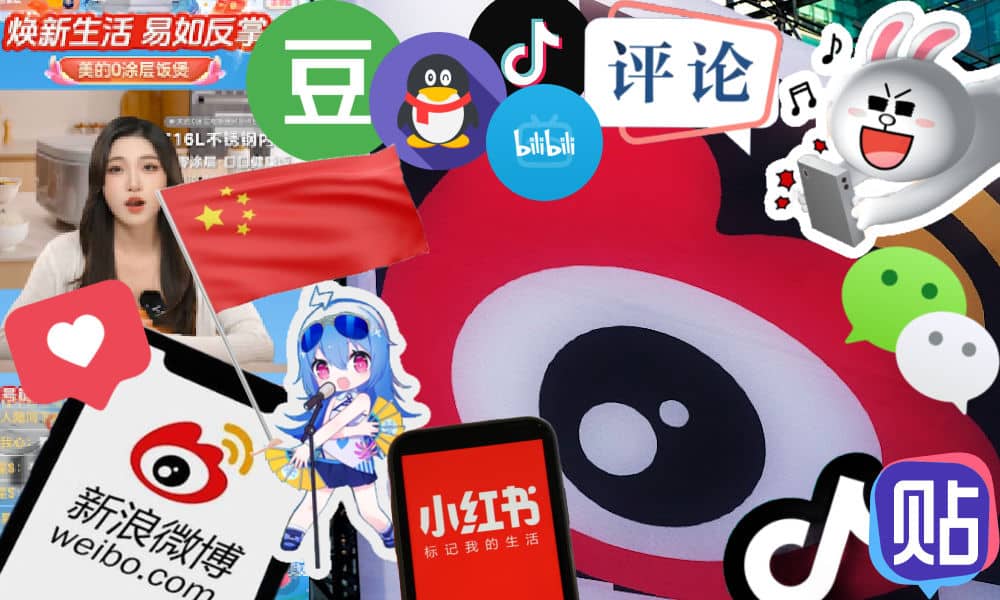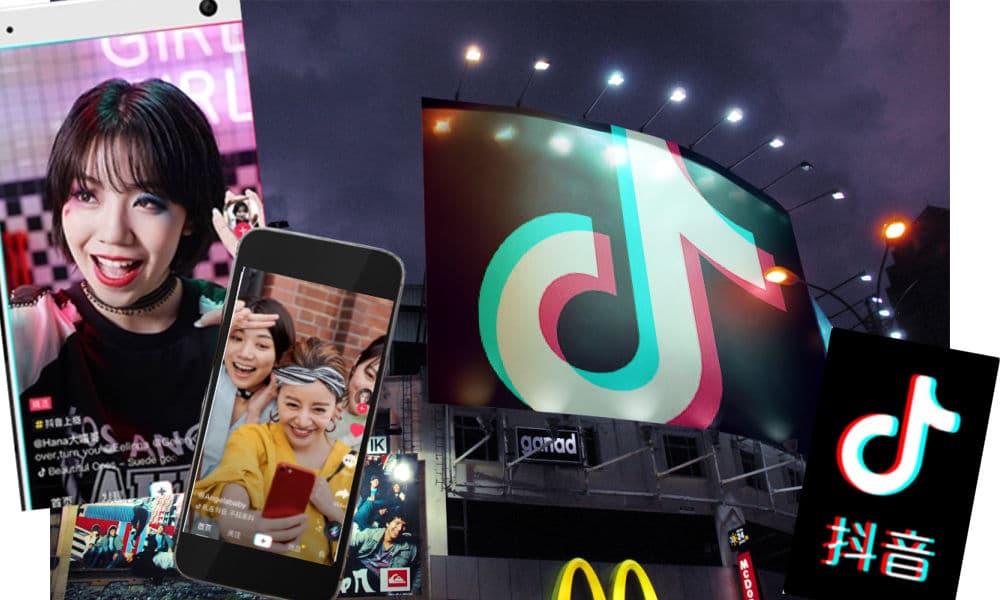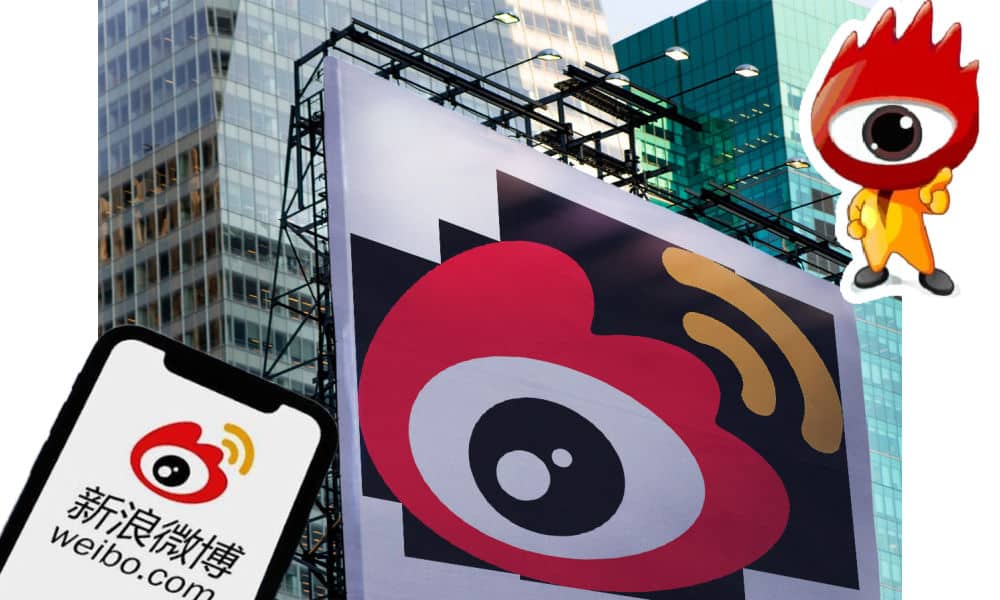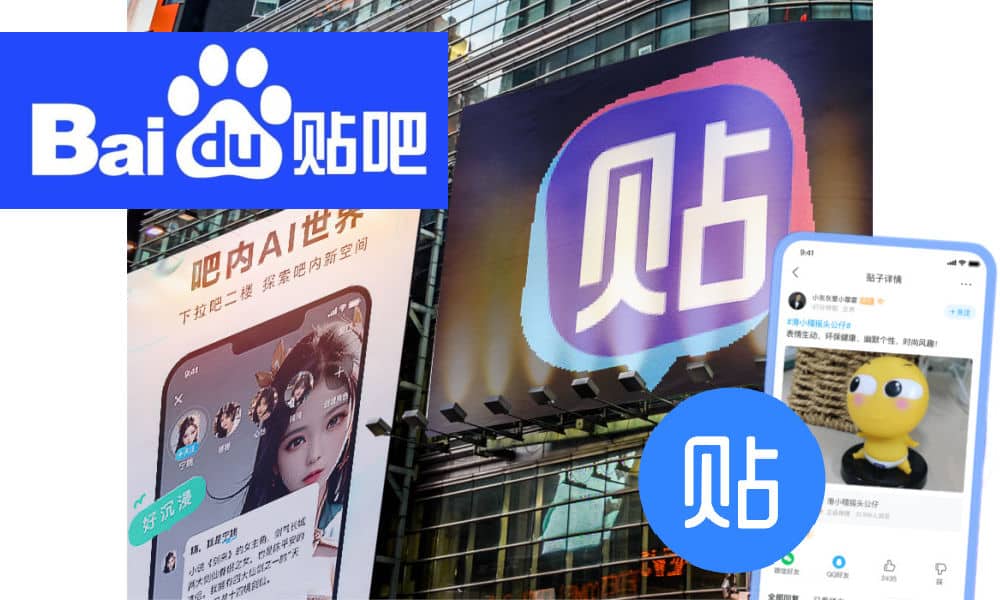WHAT’S ON WEIBO CHAPTER: “15 YEARS OF WEIBO”
Weibo has turned fifteen. As one of China’s most popular social media platforms, its journey over the past decade and a half not only tells the story of Weibo as a platform but also reflects the transformations of China’s internet at large.
It was August 14, 2009, when a new Chinese social media platform was first launched. Its name was Sina Weibo (新浪微博): ‘Sina’ because it is owned and created by Sina Corporation, a Chinese online media company founded in 1998. ‘Weibo’ because the platform allows users to post short ‘blogs,’ with wēibó (微博) literally meaning micro-blog.
At the time of its launch, Sina Weibo faced little competition and quickly gained traction. Within four months, it surpassed 5 million users. Now, over 15 years later, Weibo has over 580 million monthly active users (Ke 2024; Liang 2022).
As one of the pioneering platforms in China’s social media landscape that managed to stick around for so long, its story has become an important part of China’s internet history. Its rise, transformation, and future is closely connected to the broader evolution of Chinese online developments.
Here, we’ll dive deeper into the shifting role of Weibo in China’s digital age and how its struggles mirror those of a rapidly evolving internet ecosystem, where competition, censorship, and user expectations continuously reshape the platform’s journey.
But before diving into its evolution, let’s take a step back to where it all began: the year 2009.
Outline:
1. China’s Pre-Weibo Social Landscape
2. Weibo’s Recipe for Success
3. From Grassroots Voices to Government Control
4. Navigating the Next Digital Era
China’s Pre-Weibo Social Landscape
The year 2009 was a pivotal moment of change for China’s social media and internet landcape at large. It was the year when many platforms made their exit, when Weibo was launched, and when the beginning of China’s mobile internet era forced companies to rethink their strategies (Xu 2009).
The decade preceding 2009 had been a flourishing one in which the foundations of China’s own internet ecosystem had been solidified. By 1999, nearly all of China’s future internet giants—Alibaba, Tencent, Baidu, NetEase, Ctrip, Shanda, JD.com, Sina, and Sohu—had been founded, and blogging had grown so popular that 2005 became known as the ‘year of Chinese blogging’ (Mao 2020; Yu 2007, 424).
With a lively internet cafe culture, thriving online games and active message boards, those early years of social media in China were exciting, fun. Many people undoubtedly look back on them with great nostalgia.
Were these the golden years of Chinese internet? For some of China’s very first online influencers, they certainly were: in 2003, Muzimei (Mùzǐ Měi 木子美), a Cantonese sex columnist who started publishing a frank web diary of her sexual encounters with numerous men, became super famous for a while. A year later, Sister Lotus (Fúróng Jiějiě 芙蓉姐姐) from Shaanxi became the next DIY celebrity, acquiring her fame for sharing personal stories and posting provocative pictures on Tsinghua message boards. With his critical and outspoken blog posts, writer Han Han (韩寒) became China’s most famous blogger and arguably was the first KOL (Key Opinion Leader) in the Chinese digital sphere (Harwit 2014, 1066; Jeffreys & Edwards 2010, 11).
In this booming blogging time, China’s early social media environment was relatively crowded. Inspired by the success of Facebook, launched in 2004, and Twitter, which debuted in 2006, many Chinese companies tried to copy their formula. By 2007, a series of Chinese equivalents emerged, including the country’s first ‘weibo’ (microblogging) platform, Fanfou (饭否). This was soon followed by competitors such as Jiwai (叽歪), Taotao (滔滔), and other domestic players, creating strong competition for Facebook and Twitter, both of which were still accessible in mainland China at the time.
Then came 2009, a politically charged year on multiple fronts—internationally, domestically, and locally.
➡️ It was the year social media emerged as a powerful tool for activism, fueling various pro-democracy protests abroad, such as the Iranian Green Movement. Dubbed “Twitter Revolutions,” these movements relied heavily on social media for sharing information and organizing resistance. This undoubtedly heightened concerns among Chinese authorities about the potential for similar events in China, especially as the summer of 2009 marked the twentieth anniversary of the Tiananmen Square protests (Harwit 2014, 1077; Zhang & Negro 2013, 200).
➡️ It was the year of the major fire at the Beijing Television Cultural Center, located right behind the brand-new CCTV tower designed by Rem Koolhaas. While traditional media reported on the fire cautiously, the real story emerged through witnesses on the street using Twitter and local microblogs. Some even suggested that the fire was reported in real-time on social media before the local fire station was aware. This event highlighted for authorities the immense power of social media and the growing impact of ‘citizen journalism’ (Sullivan 2012, 775).

The fire at the Beijing Television Cultural Center, 9 February 2009 (Wikimedia source)
➡️ It was also the year of continued unrest in Tibet and major riots in Xinjiang, both of which were attributed to the free flow of information on social media. These incidents led to localized internet shutdowns and tighter centralized online controls. Following the Xinjiang riots, Facebook, YouTube, and Twitter were blocked in China, and popular domestic platforms like Fanfou suspended their services.
The big exit of America’s social media giants in China and the end for early domestic platforms created a window of opportunity for new, emerging players. Local businesses quickly stepped into the social media vacuum.
The first to present a viable plan was the media company Sina. Its CEO, Charles Chao (Cáo Guówěi 曹国伟), trusted by Chinese authorities, assured the government that content on their platform would be tightly regulated and that they would guide the direction of online public opinion by structuring and organizing discussions in certain ways (Stockman & Luo 2017, 199; Sullivan 2012, 775).

Consequently, while Weibo’s launch in 2009 occurred amidst political turbulence, its founding was itself a highly political event. Not only was its creation inseparable from the political climate of the time, but the platform also became a tool for influencing and controlling public opinion and discourse.
2. Weibo’s Recipe for Success
While the start of Sina Weibo is intertwined with China’s political climate, the platform is inherently commercial. As the first microblogging platform to be authorized after the 2009 crackdown, Sina Weibo had a clear advantage and stood at the beginning of a new Chinese digital era—one marked by the dominance of domestic players and the rise of the smartphone boom.
Weibo was initially modeled after Twitter in some ways. In addition to allowing users to post images and GIFs, it also had a 140-character limit for posts, focused on real-time, public conversations, utilized hashtags and trends, and implemented a “follower-following” system. This system allowed users to follow public figures or celebrities without needing to be mutual ‘friends,’ like on Facebook.

Weibo’s old layout.
These features quickly earned Weibo the label of the “Chinese version of Twitter.” With its competition out of the way, Weibo emerged at exactly the right time.

Other Weibos: Sohu Weibo, Tencent Weibo, NetEase Weibo.
Although the timing was opportune, Sina needed more than just favorable circumstances to attract a large user base, especially because other ‘Weibos’ soon followed: Tencent Weibo, Sohu Weibo, and Netease Weibo all tried to get their share of the market. With a clear strategy, Sina transformed their Weibo into something far more than a mere Twitter clone.
Strategy #1: Right Timing, Right People
One important part of the strategy employed by Sina Weibo is that, immediately after its authorization, it started to encourage movie stars, singers and famous business, sport and media celebrities to join their platform (Zhang & Negro 2013, 201).
As an online media company, Sina was already well-connected with public figures and they had previously leveraged celebrity influence to boost their Sina blogging platform in the pre-Weibo years. Just eleven months after launching, Sina Weibo had verified over 20,000 celebrities or influentials on its platform, with some top accounts, like actress Yao Chen (姚晨), boasting over two million followers (Baike 2024).

By 2011, actress Yao Chen had 10 million followers on Weibo. Image source: Steven Millward, Tech in Asia, 2011.
While Sina Weibo competitors focused more on grassroots users, this celebrity-centric approach created a snowball effect; the more influential people joined, the more others wanted to join as well.
Within three months after launch, Sina Weibo had one million users; by its eighth month, they reached 10 million; and a year later, there were over 50 million registered users (Zhang & Negro 2013, 201).
Strategy #2: Fostering Weibo Culture
From the start, Sina Weibo also chose a noteworthy approach of being very community-driven, promoting “Weibo Culture,” holding various competitons and conferences to invite talents from all over the country to share their ideas and views on the use of Weibo, holding an annual Weibo Night, and setting up its Charity Platform.
To this day, ‘Weibo Culture’ is an important part of the platform, as Weibo is sponsor and initiator of all kinds of events across entertainment, media, sports, academics, art.
Some older and newer examples include Weibo Movie night, Weibo TV & Internet Summit, Weibo dance competition, Weibo mobile photography competition, Weibo developer challenge (2011), Weibo marketing strategy competition (2018), Weibo vlog contest, and Weibo campus awards. These initiatives allow Weibo to increase its influence across various social fields, attract more users, and enhance its brand vaue and engagement.
Strategy #3: Weibo At Heart of Unfolding News Events
What stands out most about Sina Weibo’s strategy is how it positioned itself at the center of unfolding news events—not only as the key platform for users to discuss incidents but also as an active player in gathering, managing, and disseminating information during critical moments (Li 2023, 738).
One important reason for this emphasis on unfolding news is that breaking events are a “battleground for business”—a prime opportunity to boost viewing rates, attract more users, and ultimately increase revenue.
A notable example is the 2011 Wenzhou train crash, where Weibo quickly emerged as a vital source for real-time updates. Operators actively filtered and manually reviewed posts related to the crash, extracting crucial information. Passenger accounts were highlighted as key contributors, and the platform consistently delivered the latest updates to users.
Furthermore, by showcasing and contrasting different perspectives, Weibo encouraged discussions and amplified the controversies surrounding the incident, drawing significant public attention. As Weibo users shared firsthand accounts, challenged the official narrative, and demanded transparency about what had occurred and why it was being concealed, the incident solidified Weibo’s role as China’s leading social media platform for public discourse and real-time engagement during major events (Le Han 2016, 12; Li 2023, 738).

The Wenzhou train collision, images via China Youth Online.
Fudan University’s Mengying Li conducted extensive research on Sina Weibo’s operational strategies during its early years. Focusing on major incidents or Weibo’s ‘hot event operations’ (热点事件运营), she carried out 21 in-depth interviews with Weibo operators and opinion leaders. Li found that Weibo, much like a news editor at a newspaper, played a pivotal role in helping incidents go viral—a practice that continues to influence the platform’s approach today (736-738):
🔸Weibo as News Agent: Weibo recruited and spotlighted journalists and intellectuals, prominently featuring their posts to shape public narratives.
🔸Weibo as an Information Curator: Weibo operators closely monitored breaking news incidents and acted on them immediately.
🔸Weibo as Relevancy Filter: Weibo ensured that posts from IP addresses linked to where an incident took place were prioritized and created topic pages to enable centralized discussions.
🔸Weibo as Amplifier of Key Voices: Weibo operators invited those at the center of incidents (e.g., victims or witnesses) to open verified accounts, providing them with a platform to share updates directly with the public.
🔸Weibo as Content Promoter: Weibo strategically amplified its own content by identifying and boosting key posts and user contributions through its recommendation mechanisms, distributing them via multiple channels.
🔸Weibo as Diverter: By steering attention toward new content and limiting the lifespan of trending topics, Weibo ensured a dynamic flow of fresh material to sustain user engagement and interest.
By 2011, it was clear that Sina Weibo was the ‘winner’ among microblogging platforms, leaving competitors far behind. Looking back, Chinese commentators such as Michael Anti have referred to Weibo’s early years (2009–2013) as its golden era (Koetse 2014). Sina Weibo crowned its success by acquiring the weibo.com domain name in 2011, cementing its status as the definitive “Weibo.”
3. From Grassroots Voices to Government Control
From its early years, Weibo had strong appeal—not only as a celebrity-focused platform but also for companies, brands, NGOs, and regular users. As it quickly grew into one of China’s leading social media platforms, Weibo also became increasingly attractive to state and government-related actors.
Encouraging Government Engagement
The first government-run account to pop up on Weibo in 2009 was ‘“Weibo Yunnan” (微博云南), an account belonging to the Yunnan Provincial Government Information Office. The Vice Minister of the local Party Committee’s Propaganda Department, Wu Hao (伍皓), was the one to initiate the move to Weibo as a channel for local leadership to effectively communicatie with the public and address incidents. “The more transparent the information, the more likeable the government” (“信息越公开, 政府越可爱”) he said (Henan Shangbao 2009).
In 2011, Party Chief Cai Qi (蔡奇) became one of the first high-level officials to open an active Weibo account. The Party newspaper People’s Daily joined Weibo in 2012, paving the way for many more official accounts and state media outlets to follow. By the end of its first year, there were 41 government agencies and 60 public security bureaus actively using Weibo, along with 466 major news organizations that had established their own accounts (Baike 2024; Shao & Wang 2020, 47; Wei 2016).
From the beginning, Sina Weibo took an active role in shaping the leadership’s attitude toward the platform and encouraging government engagement. The company invited government departments to create accounts and provided training on managing public opinion during crises. CEO Charles Chao even delivered lectures at the Central Party School of the Communist Party and recorded video courses for government users, covering topics such as “How Weibo Could Help the Government.” These efforts paid off, with Weibo becoming a key platform for government institutions to share information: by 2014, over 130,000 Weibo accounts were official government accounts (Li 2023, 739–740; Hou 2017, 151).
New Interactions in the Digital Age
As these official accounts, celebrity accounts, and many others joined Weibo in large numbers, it became evident that the platform had evolved into a unique digital space where multiple societal layers could converge. It enabled actors from diverse sectors, who might never interact in other settings, to engage directly and publicly—facilitating a wide range of dynamic interactions. Besides interactions between celebrities and fans, this led to numerous interesting and insightful case studies throughout the years:
🔸 Celebrities vs. State Media: For example, when state media outlet CCTV reported that famous actor and director Zhang Guoli (张国立) advocated for stronger monitoring of web dramas during the plenary sessions, Zhang publicly contradicted them on Weibo, stating he hadn’t even spoken yet. This put CCTV in an awkward position, as it became clear to the public they were reporting on discussions that had not even occurred yet (read here).
🔸 Party Organizations vs. Online Regulators: In another case, a local branch of the Communist Youth League unexpectedly voiced support for China’s gay community on Weibo after online regulators listed homosexuality as an “abnormal sexual behavior” (read here).
🔸 Netizens vs. Corporations: Another noteworthy example is the Wei Zexi scandal. Wei, a 21-year-old cancer patient, died after being misled by false treatment information found on Baidu. The incident sparked widespread outrage on Weibo, exposing profit-driven malpractice in China’s healthcare market and implicating both Baidu and the Putian Medical Group (read here).
Bottom-up Movements, Top-down Regulation
From its early years to present, Weibo has always been a platform for public-driven movements, enabling users to address social injustices, create awareness on pressing issues and influence local politics.
🔹 In 2011, for example, sociologist Prof. Yu Jianrong (于建嵘) launched a Weibo campaign called “Take Photos to Rescue Child Beggars” (随手拍照解救乞讨儿童) during the Spring Festival. Over a span of just 14 days, participants from across the country contributed more than 2,500 photos and messages. With the assistance of law enforcement, the campaign successfully reunited six abducted children with their families. Among them was Peng Wenle (彭文乐), who had been kidnapped in Shenzhen in 2008; thanks to the campaign, he was finally brought home. This highlights Weibo’s role as a platform for opinion leaders to drive meaningful social impact (Chongqing Business Newspaper 2011; Zhan & Negro 2013, 203).

“Take Photos to Rescue Child Beggars” campaign. Left: one of the photos sent in by Weibo users photographing child beggars. Right: Peng reunited with his dad thanks to the campaign (Images via Chongqing Business News).
🔹 One other famous case highlighting the public-powered impact of Weibo is that of Yang Dacai (杨达才), a former Shaanxi provincial work safety bureau head. For most people, Yang was an unknown bureaucrat—until 2012, when a photograph of him smiling at the site of a tragic traffic accident that killed 36 people went viral. This image of the “Smiling Official” (微笑局长) sparked outrage on social media and quickly led to a digital investigation into his identity and background.
What followed was a striking example of China’s Human Flesh Search Engine (HFSE) in action. Internet users dug up numerous photos of Yang wearing 11 different luxury watches on various occasions, some valued at around 400,000 RMB (approximately $65,000 USD). This discovery led to Yang being nicknamed “Brother Watch” (表哥) and made him the subject of widespread public scrutiny.

Yang Dacai became a target of Weibo’s ‘Human Flesh Search Engine’ after netizens saw him smiling at the site of a traffic accident and then found he owned various luxury watches.
The online pressure eventually triggered an official investigation. Yang was sentenced to 14 years in prison for bribery and possession of assets of unclear origin, showcasing the HFSE’s ability to hold powerful figures accountable. The Yang Dacai case is an early and prominent example of the HFSE’s potential as a tool for online protest and crowdsourced monitoring in China.
While serving as a commercial entity, boosting state-society interactions, and providing a platform for diverse voices and movements, Weibo must also adhere to the various official (and at times murky) regulations of China’s digital environment. Although Weibo employs censorship strategies and follows directives from the Central Propaganda Department (Wang 2016), it still occasionally runs into trouble.
In 2017, for instance, Weibo, along with major platforms like Tencent and Baidu, was fined by Chinese regulators for hosting banned content as part of a broader crackdown on online information deemed inappropriate by the government. In 2018, Weibo was ordered to shut down its hot search and trending topic lists as a punishment for failing to manage its information flows effectively. Similar penalties followed in 2020 for “disrupting online communication order” and “spreading illegal information.” In 2021, the Cyberspace Administration of China imposed a fine of 3 million yuan (approximately $471,165 USD) on Weibo for repeatedly allowing the publication of “illegal information.”
4. Navigating the Next Digital Era
As one of China’s social media giants, Weibo’s priority is to keep its users engaged and stay relevant. At the same, it is also a priority to keep authorities content and keep discussions in check. This balancing act has led to a seesaw movement between greater freedom and increased control on the platform. During periods of tighter regulation, Weibo’s relevance has occasionally appeared to waver, only to rise again.
Weibo Loses, Weibo Wins
📉 Around 2014-2015, when Weibo’s initial wave of success had settled, there was a growing sentiment that Weibo was on its way out, especially because other social media platforms became increasingly popular. WeChat, launched in 2011, had grown into more than just a messaging app—it became a lifestyle platform. If 2009-2012 was the golden age for Weibo, then 2012-2015 was the prime time for Tencent’s WeChat.
It was also a time when Chinese social media users were seeking their own niche online communities. Some gravitated toward Xiaohongshu (now also known as Rednote), an app launched in 2013 that blended online shopping guides with a community platform. It quickly became popular, especially among female Chinese users with interests in fashion, travel, and lifestyle.
Others turned to Zhihu, China’s first major Q&A website launched in 2011, or Kuaishou, the first Chinese short-video platform also developed in 2011. Meanwhile, video streaming site Bilibili gained early popularity among fans of anime, manga, and gaming with its interactive “bullet comments” (弹幕) feature (this allows viewers to post real-time comments that appear directly on the video screen as it plays).
During this time, Weibo was adjusting to new cyberspace regulations. In 2015, the BBC reported that new rules requiring real-name authentication on the platform could drive users away (Hatton 2015). “Weibo is dead” became a popular statement. Adding to the pessimism was the nervousness among investors during Sina Weibo’s stock market listing, fueled by growing concerns about how Weibo could handle increasing competition.

2014 Twitter conversation on Weibo being dead. (Screenshots by Whatsonweibo)
📈 But in 2016, Weibo saw a major revival with the rise of online influencers and the social media celebrity economy. Among a wave of self-made celebrities emerging during this period, Papi Jiang stood out as one of the “super influencers” (超级红人). The vlogger gained widespread fame with her humorous videos addressing everyday societal issues, becoming a rising superstar on the platform and contributing to its renewed success. Other viral creators who rose to prominence on Weibo included Aikeli Li (艾克里里), Huang Wenyu (黄文煜), Wang Nima (王尼玛), and others (Xiao Yao 2024)

Papi Jiang was one of the super viral Weibo creators of 2016.
📉 Then in 2019, a year marked by the 30th anniversary of the Tiananmen protests, the US-China trade war, Hong Kong protests, and rising tensions surrounding Taiwan’s future, the censorship on Weibo seemed more stringent than ever before. This inevitably led to a noticeable decline in user engagement on the platform.
A post by a Chinese blogger, suggesting that intellectual discussions on Weibo were dying, struck a chord with millions of users (read the full translated post here). The blogger argued that Weibo was “no longer a place to share news and knowledge, nor a place for open debate.” With major events unfolding that could not be openly discussed, these issues became “like an elephant in the room on Weibo” (Koetse 2019).
📈 The Covid outbreak in late 2019 and early 2020, however, put Weibo right back at the center of China’s social media arena. Much like in its early years, Weibo was actively involved in unfolding incidents, ensuring that the latest Covid updates were readily available on the site and playing a key role in connecting those seeking help with relevant government departments.
While Weibo served as an important channel for Party media to promote narratives of a united China battling the virus, it also became a space where grassroots users expressed anger over local mishandlings and social injustices. This cemented Weibo’s role as a major online news hub during the pandemic, playing an even more “crucial role in shaping public engagement and political participation” than before (Beijing Daily 2020; Li 2023, 730-731).
Reshufflings in the AI Era
After the rise of China’s major internet companies and platforms in the late 1990s to early 2000s, followed by the transition to the mobile era between 2009 and 2013, we are now witnessing a third major phase of transformation and growth in the Chinese online media landscape: the AI era.
In recent years, Bytedance and its AI-driven apps, most notably Douyin (the mainland version of TikTok) have become increasingly influential in China. Other platforms that were initially more niche, such as Bilibili or Xiaohongshu (Rednote), have also moved into the mainstream, emerging as birthplaces for online trends and memes.
Where does this leave Weibo?
Some voices argue that Weibo’s current path has become too commercial. By prioritizing intrusive ads and clickbait headlines, critics feel it has lost its “human touch,” especially as many influential bloggers and celebrities have either left the platform or stopped updating. Somewhat ironically, they suggest that platforms designed with AI integration from the start, such as Douyin, now feel more authentic to users (Xiao Yao 2024; Tech Nice 2024).
Weibo, meanwhile, is often updates its features and is integrating more AI into its platform, not just to automatically identify and filter content, but also to create trending topic lists and content feeds, or to assist users in finding and understanding information and news events. The Weibo Smart Search AI chatbot (微博智搜), for example, answers questions about hot topics and helps users create posts about them.
Maintaining a strong foothold in China’s social media sphere is not just important for Weibo as a company, it’s also essential for official channels and state media in their efforts to shape public opinion and promote Party narratives. Weibo now has over 17,000 registered media accounts reaching an audience of millions. More than a celebrity platform, Weibo is the social home of China’s newspapers: 97% of the social and current affairs topics on Weibo’s trending lists now originate from media reports (ZGJX 2024).
Weibo’s struggles reflect the shifting dynamics of the online media environment. During a media conference in October 2024, Weibo CEO Wang Gaofei (王高飞) addressed how there has been a “decentralization” in online news consumption. Rather than looking at the centralized ‘hot topics,’ social media users, especially in the post-pandemic era, increasingly turn to personalized, decentralized information feeds. Moreover, the kind of content they prefer is also more interest-driven, which is why the role of AI is so important in social media today—something which companies like Bytedance and Xiaohongshu (Rednote) understand all too well.
Adapting to changing times, Weibo’s centralized trending topic lists are becoming less important, as the platform is now offering users more personalized topics based on their interests. Wang Gaofei remains optimistic about the platform’s future, emphasizing that media integration will continue to be a cornerstone of its strategy.
A Digital Dinosaur Standing Tall
It’s not easy to survive for 15 years in an online environment that evolves so quickly. Beyond navigating the complex dynamics of official guidelines, managing censorship, keeping users engaged, and satisfying advertisers, Weibo has had to constantly rethink its strategies and adapt to the times.
Despite uncertainties about its future role in China’s social media landscape, Weibo’s impact on the history of China’s internet is undeniable. The platform’s strength lies in its ability to facilitate public opinion, foster interaction across different layers of society, and play a significant role in news discussions. It has consistently balanced official demands with grassroots movements, occasionally stirring controversy to attract attention and highlight contentious news.
Surrounded by newer apps and younger companies, Weibo might already be considered a “dinosaur” in the world of Chinese social media. But it’s a tall one—a major example for emerging players to look up to as they navigate an increasingly complex digital ecosystem.
Even after 15 years, there is still no place like Weibo. It remains relevant as a central hub for discussing both mainstream and niche news. In an increasingly fragmented social media landscape, when something big happens, China still gathers in Weibo’s “living room.” In many ways, Weibo’s best strategy for future success might just be to remain true to what it has always been.
By Manya Koetse
(follow on X, LinkedIn, or Instagram)
References
● Baidu Baike. 2024. “China’s Weibo First Year Market White Paper [中国微博元年市场白皮书].” Last modified May 22, 2022. Accessed January 14, 2025. https://baike.baidu.com/item/%E4%B8%AD%E5%9B%BD%E5%BE%AE%E5%8D%9A%E5%85%83%E5%B9%B4%E5%B8%82%E5%9C%BA%E7%99%BD%E7%9A%AE%E4%B9%A6/6025166.
● Beijing Daily 北京日报. 2020. “How to Seek Help on Weibo During the Pandemic: Government Departments Will Respond” [疫情期间微博求助这样发,将有政府部门对接]. February 4. Accessed January 12, 2025. https://china.huanqiu.com/article/9CaKrnKpc7K.
● Harwit, Eric. 2014. “The Rise and Influence of Weibo (Microblogs) in China.” Asian Survey 54 (6): 1059–1087.
● Hatton, Celia. 2015. “Is Weibo on the Way Out?” BBC News, February 24. Accessed January 15, 2025. https://www.bbc.com/news/blogs-china-blog-31598865.
● Henan Shangbao·Dahe Network (河南商报·大河网). 2009. “Yunnan Provincial Government Joins Weibo” [云南省政府‘戴围脖]. Chengdu Commercial Daily, November 26. Accessed January 13, 2025. https://news.sina.cn/sa/2009-11-26/detail-ikmxzfmi9474674.d.html.
● Hou, Er. 2017. “Development Report on China’s Government Affairs New Media in 2014.” In Development Report on China’s New Media, edited by Xujun Tang, Xinxun Wu, Chuxin Huang, and Ruisheng Liu, 149–163. Singapore: Social Sciences Academic Press, Springer.
● Jeffreys, Elaine, and Louise Edwards. 2010. “Celebrity/China.” In Celebrity in China, edited by Louise Edwards and Elaine Jeffreys, 1–21. Hong Kong: Hong Kong University Press.
● Jiang, Min, and Jesper Schlæger. 2014. “How Weibo Is Changing Local Governance in China.” The Diplomat, August 6. Accessed January 15, 2025. https://thediplomat.com/2014/08/how-weibo-is-changing-local-governance-in-china/.
● Liang 梁将军. 2022. “Hardcore Research on ‘Network Effects’: Why Do You Have a Better Product but Still Can’t Beat Your Competitor?” [网络效应”的硬核研究:为什么你有更好的产品,却干不过对手?]. July 1. Accessed January 14, 2025. https://www.woshipm.com/user-research/5507557.html.
● Ke Yang Weibo Releases Q2 2024 Financial Report: 583 Million MAUs, Over Half of Ad Revenue Driven by Hot Topics, Celebrity KOLs, and Performance Ads
https://finance.sina.cn/2024-08-22/detail-inckpkpk2208211.d.html?oid=3817793013587371&vt=4&cid=76729&node_id=76729
● Koetse, Manya. 2014. “Behind the Headlines: China’s Media Landscape (Liveblog).” What’s on Weibo, May 14. https://www.whatsonweibo.com/behind-the-headlines-chinas-media-landscape/.
● Koetse, Manya. 2019. “Chinese Blogger Addresses Weibo’s ‘Elephant in the Room.’” What’s on Weibo, June 10. Accessed January 16, 2025. https://www.whatsonweibo.com/chinese-blogger-addresses-weibos-elephant-in-the-room/.
● Han, Le Eileen. 2016. Micro-blogging Memories: Weibo and Collective Remembering. London: Palgrave Macmillan.
● Li, Mengying. 2023. “Promote Diligently and Censor Politely: How Sina Weibo Intervenes in Online Activism in China.” Information, Communication & Society 26 (4): 730–745.
● Mao, Lin 毛琳. 2020. “25 Years of Transformation in China’s Internet: Two Leaps, Four Waves, and a Bet on the Future” [中国互联网25年变迁:两次跃迁,四次浪潮,一次赌未来]. Woshipm (人人都是产品经理), January 3. Accessed January 12, 2025. https://www.woshipm.com/it/3282708.html.
● Shao, Peiren, and Yun Wang. 2020. “Social Media and the Changing Political Culture in China.” In China in the Era of Social Media: An Unprecedented Force for An Unprecedented Social Change, edited by Junhao Hong, 39–63. Lanham, MD: Lexington Books.
● Stockmann, Daniela & Ting Luo. 2015. “Which Social Media Facilitate Online Public Opinion in China?” SSRN Electronic Journal, 64 (3–4): 189–202.
● Sullivan, Jonathan. 2012. “A Tale of Two Microblogs in China.” Media, Culture & Society, 34: 773–783.
● Sullivan, Jonathan. 2014. “China’s Weibo: Is Faster Different?” New Media Society (16) 1: 24-36.
● Tech Nice (科技Nice). 2024. “Sina Weibo: The Decline of Its Glory and the Path Forward [新浪微博:辉煌不再的背后与未来之路].” Sohu.com, January 24. Accessed January 18, 2025. https://www.sohu.com/a/753942489_121769622
● Wang, Yaqiu. 2016. “The Business of Censorship: Documents Show How Weibo Filters Sensitive News in China.” Committee to Protect Journalists, March 3. Accessed January 15, 2025. https://cpj.org/2016/03/the-business-of-censorship-documents-show-how-weib/.
● Wei, Liu. 2016. “Meet Cai Qi, Long-Time Online Celeb and Beijing’s Acting Mayor.” China Daily, November 1. Accessed January 15, 2025. https://www.chinadaily.com.cn/china/2016-11/01/content_27241562.htm.
● Xiao Yao 小遥. 2024. “Weibo Has Long Lost Its ‘Human Touch'[(微博早就没有‘人味儿’了].” WeChat public account “Lüedacan Kao” (微信公众号“略大参考,” ID: hyzibenlun) and published on 36Kr, September 2, 2024. Accessed January 12, 2025: https://36kr.com/p/2932177595275911.
● Xu, Zhiqiang 徐志强. 2009. “VC Gold Rush: Embracing the Mobile Golden Era [VC淘金:拥抱移动黄金时代].” 21st Century Business Herald, April 23. Accessed January 12, 2025. https://finance.sina.cn/sa/2009-04-30/detail-ikkntiam4042149.d.html?from=wap.
● Yu, Haiqing. 2007. “Blogging Everyday Life in Chinese Internet Culture.” Asian Studies Review 31: 423–433.
● Zhang, Zhan, and Gianluigi Negro. 2013. “Weibo in China: Understanding Its Development Through Communication Analysis and Cultural Studies.” Politics & Culture 46 (46): 199–216.
● ZGJX (China Journalists Association Net 中国记协网). 2024. “Sina Weibo CEO Wang Gaofei: Shaping a New Framework for Mainstream Public Opinion through Weibo’s Strength [新浪微博CEO王高飞:以微博之力共塑主流舆论新格局].” China New Media Conference, October 15. Accessed January 18, 2025. http://www.zgjx.cn/2024-10/15/c_1310786675.htm.
Spotted a mistake or want to add something? Please let us know in comments below or email us. First-time commenters, please be patient – we will have to manually approve your comment before it appears.
©2025 Whatsonweibo. All rights reserved. Do not reproduce our content without permission – you can contact us at info@whatsonweibo.com.
Follow What’s on Weibo on

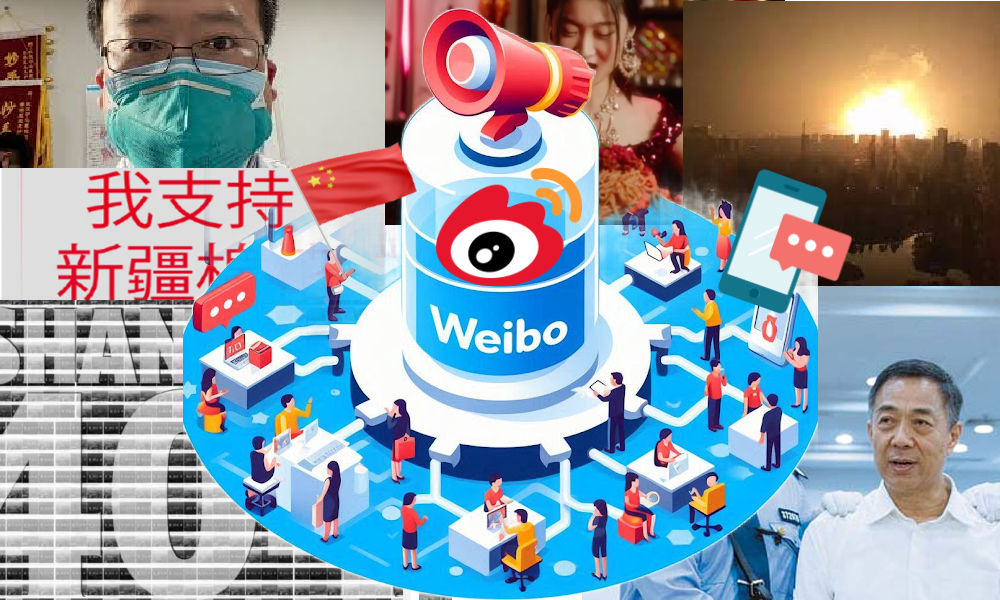





 China Insight11 months ago
China Insight11 months ago
 China Digital10 months ago
China Digital10 months ago
 China Arts & Entertainment11 months ago
China Arts & Entertainment11 months ago
 China Arts & Entertainment12 months ago
China Arts & Entertainment12 months ago



















